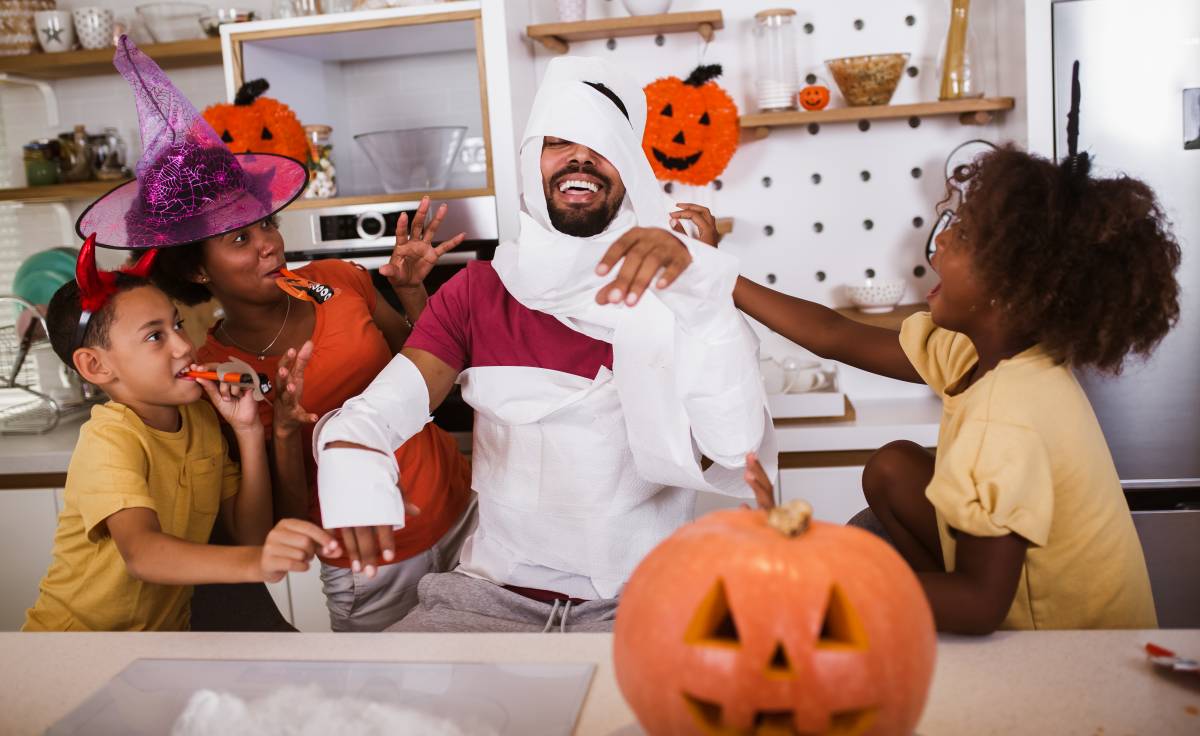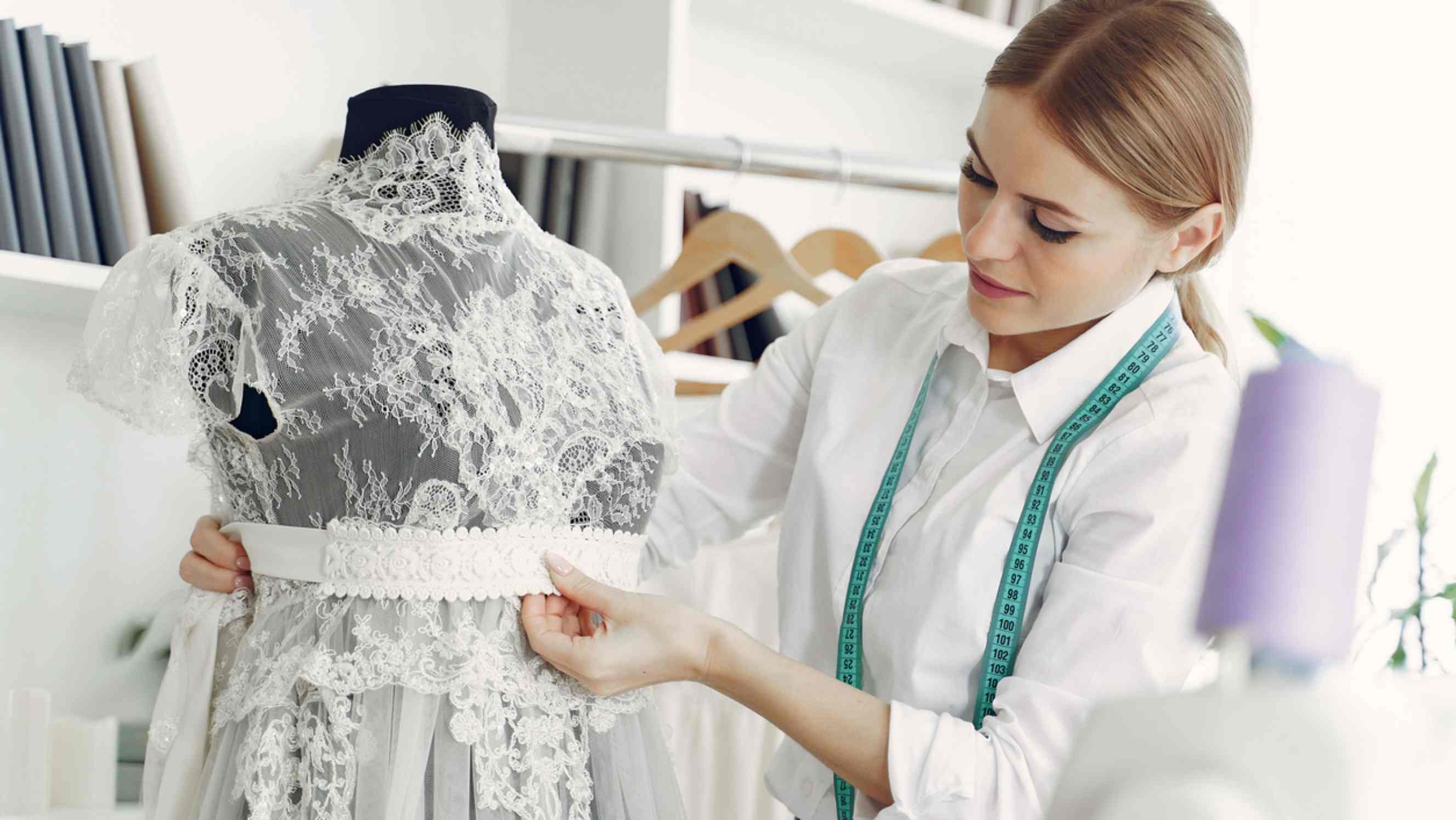- Home/
- Comparisons/
- Sewing/
- Hand Sewing vs. Sewing Machine

Hand sewing vs. sewing machine: Which one should you go for?
Comparing hand sewing and sewing machine based on speed and efficiency, control and precision, stitch quality, and more.
Hire a sewing expertPublished on
Key Facts
Hand sewing is a manual stitching technique used for detailed and precise work. The stitches are made by hand, often only using needle and thread.
A sewing machine is a mechanical device designed to perform a quicker and more efficient stitching process. It automatically stitches fabric together using various stitch patterns.
Considering the best way to approach your next sewing project? Whether you're crafting delicate embroidery or assembling a quilt, the choice between hand sewing and using a sewing machine can significantly impact your results. Each method offers distinct benefits, from the control and precision of hand sewing to the speed and versatility of a sewing machine.
In this guide, we'll compare hand sewing vs. sewing machine to help you decide which method aligns best with your artistic aspirations and practical needs. Let’s explore how each technique can enhance your craft and ensure every stitch is a masterpiece.
What is hand sewing?

Hand sewing is the art of stitching fabric using just a needle and thread. You can use this to repair a tear in your favorite jeans or add delicate embellishments to a dress.
Hand sewing also offers precision and control. One of the key benefits is that it lets you get those tiny, intricate details just right. Plus, learning how to sew by hand is a valuable skill that allows you to work on your projects anywhere.
What is a sewing machine? 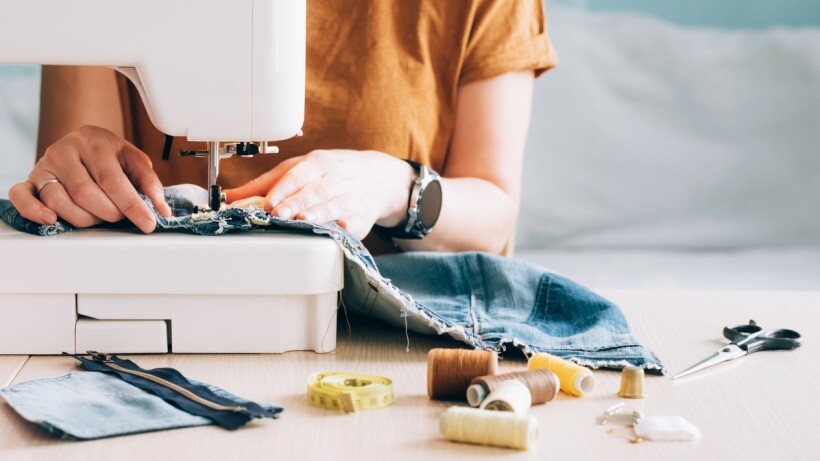
A sewing machine is a mechanical device that uses a needle and thread to stitch but is powered by electricity. This allows you to stitch at a much faster pace.
These machines come with various stitch patterns and settings, so you have the freedom to tackle all kinds of sewing projects, from simple mends to complex designs. They can also easily handle thick fabrics like denim or multiple fabric layers.
There are two main designs of sewing machines. A hand sewing machine that’s particularly useful for quick repairs and minor projects. They're lightweight, portable and can be operated by hand. There are also electric sewing machines that run with a motor for more extensive tasks.
Sewing machine vs. hand sewing: How do they differ?
Choosing between completing a project through hand sew vs. machine methods is a big decision, especially when you're weighing all the possible factors. So, let's dive into what really sets these two apart.
In terms of speed and efficiency
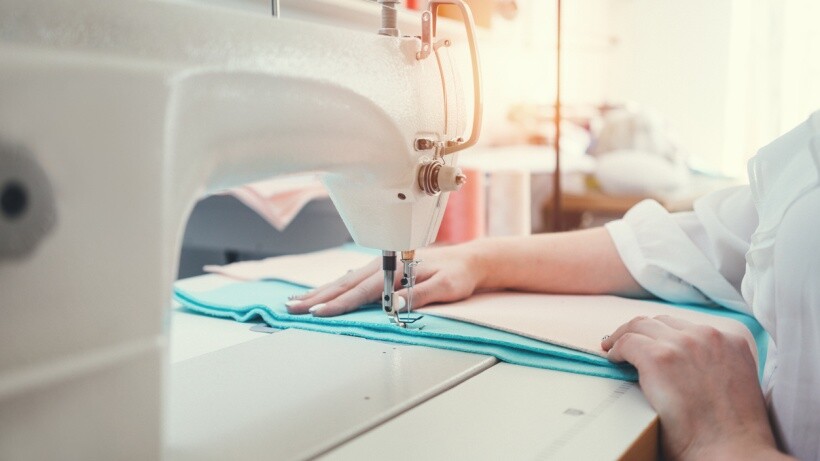
Sewing machines undeniably outpace hand sewing in terms of speed and efficiency. With the ability to stitch many times per minute, machines lessen the time spent on larger tasks. In contrast, even the best sewing techniques by hand often require meticulous attention to each stitch, making it a more time-consuming process.
Efficiency is another area where sewing machines outperform hand sewing, especially when working on repetitive projects. A machine's consistent and even stitching can lead to fewer mistakes and a more polished final product. Hand sewing might not do the same, especially if a project involves complex patterns or heavy fabrics.
In terms of control and precision
Hand sewing can make intricate details that machines might miss. Artisans often appreciate the personalized touch that hand stitches can offer to fine embroidery or delicate lacework.
Precision is another area where these sewing methods and techniques differ. Sewing machines, with their calibrated settings, give uniform stitches that are nearly identical each time. Meanwhile, hand sewing requires a steady hand and sharp eye to achieve even stitches throughout. This can be a tedious process but you do get more original and flexible results.
Hand sewing also lets you adjust every stitch as you go. Most machines don’t offer this option outright because they're designed to maintain perfect tension that’s vital for professional-grade work. You have to stop it and take some parts apart to make any changes.
In terms of stitch quality and durability
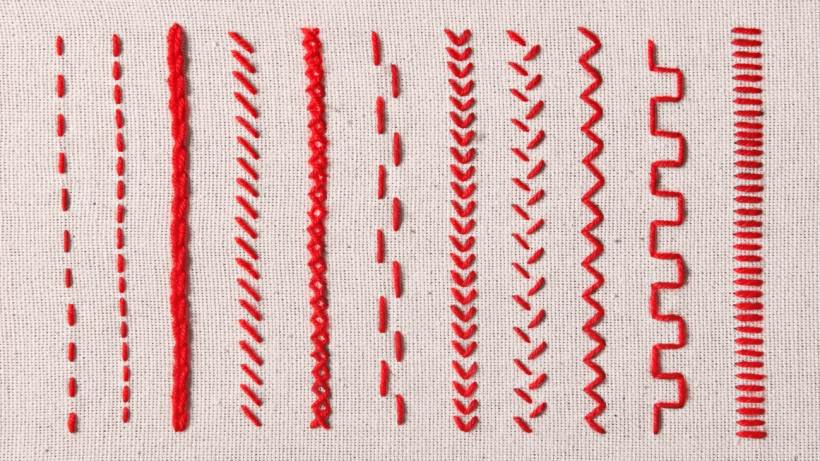
Sewing machines often deliver a more professional finish. Machine stitches, especially when using high-quality threads, withstand to regular wear and tear. They also look uniform and are less likely to unravel.
Although, there are also types of hand stitches that a sewing machine can’t replicate. For one, the embroidery stitches. Although modern sewing machines can mimic the basic ones, they often lack the dimension and texture of decorative hand stitches and French knots.
Sewing machines also leave visible stitches in the fabric, so the blind hem and slip stitches that are designed to disappear into the fabric are impossible to achieve with them. On top of that, these machines also struggle to handle embellishments like beads and appliqués or repair small tears that need intricate patchwork.
Durability is another factor to look at. Machine stitches tend to be stronger due to the tighter tension settings and even pressure applied throughout the stitching process. Hand stitches can also be durable, but it requires a skilled hand to achieve the same level of strength.
In terms of versatility and project types
Most sewing machines have specific settings for projects, such as crafting quilts doing zigzag stitches for seams. They allow you to quickly switch between different stitch types, which is great when you’re working on something complex. On the other hand, hand sewing lets you tackle designs that machines might struggle with because they can’t maneuver in tight spaces.
Hand sewing is perfect for projects that require extensive fine-tuning and adjustments. Plus, you can easily undo a stitch if you’re not happy with it.
However, this all depends on whether you're skilled enough in sewing. If you're completely new to the game, it would be quite difficult to achieve a professional finish on the first try.
An alternative to DIY, if you're really into hand-crafted clothing, is to hire a seamstress. They'll be able to offer a level of artistry and personalization that’s hard to achieve with a machine without you needing to do any work.
You can also find pros at alteration that could handle your repair needs for just $10 to $75, depending on the scope of work. For starters, you can get your dress altered in the US for £75 on average.
In terms of setup and equipment required
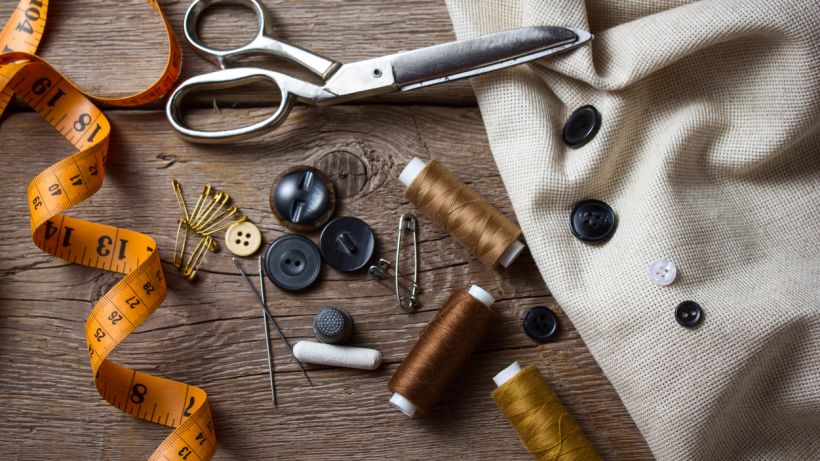
Hand sewing's simplicity can't be overstated. All you need is a needle, thread, and some fabric. There's no need to worry about sewing machine repairs or advanced sewing machine troubleshooting. Plus, it doesn’t require a lot of technical know-hows since adjustments are made manually and intuitively.
Using a sewing machine requires a more complicated setup. You'll need a machine itself, which can vary in size and complexity, along with different needle types for sewing specific fabrics or stitches. Don't forget the electricity or battery power necessary to run it, not to mention the table space to hold the machine steady.
Additionally, setting up a sewing machine demands familiarity with various components and their functions. Threading the machine, selecting stitch settings, and handling the bobbins can be intimidating tasks for newbies. You also need to be extra careful and follow basic safety protocols to make sure that you don’t get into accidents.
In terms of cost and accessibility
The essential hand-sewing tools collectively cost far less than a sewing machine, which costs around $50 to $500. As for hand-sewing, you only need to invest in some of these common sewing essentials:
Needles: $0.50 - $2 per packet
Thread: $1 - $5 per spool
Pins: $1 - $3 per packet
Sewing scissors: $5 - $20
Seam ripper: $1 - $5
Thimble: $2 - $10
Tape measure: $1 - $10
Accessibility is another area where hand sewing wins. Almost anyone can pick up the basics quickly without any special training. This makes hand sewing a more inclusive hobby, perfect for anyone who wants to get creative without any barriers.
Meanwhile, you need to spend more time and effort learning how to stitch using a sewing machine. While plenty of resources are available online, it still requires dedication and practice to become an expert.
Let the experts handle your alteration and sewing projects: Post a task on Airtasker today
The choice between hand sewing and using a sewing machine ultimately comes down to personal preference and project requirements. However, if you're feeling overwhelmed by the technical aspects or time commitment, there's an easier solution.
Why not let the experts lend a hand? By posting a task on Airtasker, you can connect with professionals skilled in alteration, sewing, and clothing repair. They can handle your projects with the precision and care they deserve.
Post a task today and meet with seasoned Taskers who can bring your creative vision to life. From custom-made clothing to intricate alterations, no project is too big or small.
Hand sewing vs. sewing machine
| Hand Sewing | Machine Sewing | |
| Speed and Efficiency |
Time-consuming process requiring meticulous attention to each stitch |
Can make multiple stitches per minute, saves time on larger tasks |
| Control and Precision |
Offers intricate details and personalized touch, suitable for delicate work |
Provides uniform, precise stitches with calibrated settings |
| Stitch Quality and Durability |
Achieves high-quality but less durable stitches |
Delivers durable stitches that can withstand regular wear and tear |
| Versatility and Project Types |
Ideal for fine-tuning and intricate projects; adaptable to tight spaces |
Handles various projects with different stitch settings; suitable for complex tasks |
| Setup and Equipment Required |
Simple setup with needle, thread, and fabric; ready to start anywhere |
Requires a machine, power source, and specific needles; involves more complicated setup |
| Cost and Accessibility |
Inexpensive; basic tools cost significantly less than a sewing machine |
Higher initial cost; requires learning to operate, but offers long-term efficiency |
FAQs on hand sewing and machine sewing
There are different kinds of hand stitches, including running stitch, backstitch, slip stitch, and whip stitch, each serving different purposes in hand sewing. For example, a running stitch is ideal for temporary basting, while a backstitch is more durable and suitable for seams.
Choose a needle based on the type of fabric and the thread thickness. Finer needles are used for delicate fabrics, and thicker ones are used for heavier materials.
The seven different types of sewing needles include sharps, ballpoint, quilting, embroidery, upholstery, beading, and chenille needles. The rule of thumb is to choose a needle based on the type of fabric and stitch you'll be using.
Find sewing alteration services, fast
Post a task
Related articles
